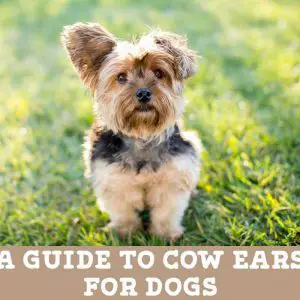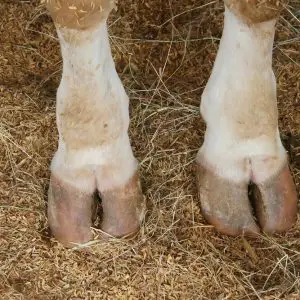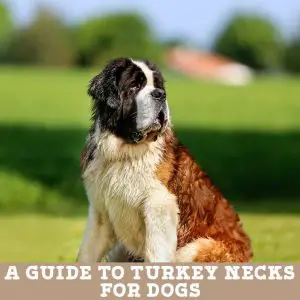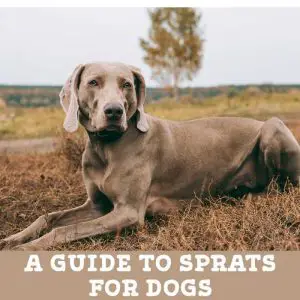Pig tails are becoming a popular snack for dogs. They are long-lasting, highly palatable and 100% natural. This article explores exactly what pigtails are. It discusses the pros and cons and answers frequently asked questions on pig tails, enabling you to decide if they are appropriate for your own dog.
Key facts
Pig tail chews are a natural product with no additives or preservatives. They are produced by dehydrating the tail section of a pig.
Pig tail chews are thought to help maintain good dental health. They also encourage healthy recreational chewing habits and offer mental stimulation for dogs.
Benefits of feeding pig tail chews are not limited to but include a source of mental stimulation, possible benefits for better oral health, nutritional benefits and being a single source of protein.
Pig tail chews are relatively high in calories. This means they should only be fed as an occasional treat or reward, not a routine part of your dog’s diet.
Risks of feeding pig tail chews include choking, bacterial contamination, digestive irritation and gastrointestinal blockages.
Some popular alternatives to pig tail chews include beef tail chews, bully sticks, dental chews and beef tendon chews.
What Are Pig Tails for Dogs?
Pig tail chews are a natural product that is made from the tail of a pig. They include bone, cartilage, tendon, and fat and they can include the skin surrounding the tail too. They can be freeze-dried, dried naturally or roasted slowly at a low temperature.
They have gained popularity due to the fact they usually have a high protein and low-fat ratio. They contain glucosamine and chondroitin which are thought to aid in the maintenance of healthy joints.
Most manufacturers boast a 100% natural product with no preservatives or additives.
Pig tail chews are usually sold whole and are approximately 8-10 inches long with the base being a lot thicker than the end of the tail. Due to the natural variation of pig tails, the treats do vary in width and length. They offer an interesting and varied texture due to the different components.
They are usually recommended for medium to large-breed dogs but the recommendations also do vary depending on the manufacturer.
Provenance
Pig tails come from the tail of the pig carcass. The tail isn’t usually intended for human consumption, therefore using pig tail treats means that more of the carcass gets put to good use and it makes the process more sustainable. The United Kingdom produces a large amount of pork however pork is also sourced from countries in the European Union.
The European Union supplies most of the pork imported into the UK, this is due to the fact that there are high import tariffs on pork from other countries.
Food safety standards in other countries vary greatly so this is something to consider when looking for a product for your dog. Always try to buy local produce if possible to reduce the carbon footprint. It is recommended to look for products approved by the associations listed below as this will mean certain welfare standards are maintained.
Preparation
Pig tail chews are made from dehydrated sections of pig tail. They are usually sold as the whole tailpiece. They are normally air-dried or slowly baked at a low temperature. The individual chews will vary in appearance as each pig’s tail does. Some will be a lot thicker and some will contain more fat or more connective tissue depending on the composition.
Raw Feeding
Did you know?
If you choose to feed your dog a raw diet, it is possible to incorporate pig tail chews and still stick to a raw food diet. This is due to the way the tails are dehydrated – only a very low temperature is used so they still are classed as raw food. This is good news although there are a few things owners need to bear in mind when feeding raw pig tail chews.
All raw food products carry a risk of contamination from potentially harmful bacteria. This includes E. Coli, Salmonella, Listeria and Campylobacter.
Your dog may not be at high risk of developing serious disease, however, if there are any vulnerable humans in the household they will be at risk. This includes young infants, the elderly, or anyone with a compromised immune system.
It is vital to always wash hands properly after handling the treats and to clean down surfaces with an appropriate cleaning product to ensure optimum hygiene.
Benefits of Pigs Tails for Dogs
Key benefits
Mental Stimulation
Pig tail chews encourage healthy recreational chewing habits and provide mental stimulation for your dog.
Nutritional Benefits
Pig tail chews contain a variety of nutrients including glucosamine and chondroitin which are thought to have many benefits for good joint health.
Dental Health
Pig tail chews may help remove plaque and tartar from teeth and reduce the amount of bacteria in the mouth.
Single Protein Source
If your dog suffers from allergies, as long as they do not react to pork protein, pig tail chews are a very safe option as they contain 100% pork and nothing else.
Mental Stimulation
Pig tail chews are a brilliant way of bringing mental enrichment to your dog’s life. Dogs use recreational chewing as a way to explore their environment and also to learn how to hunt in the wild. It is actually a positive behaviour, despite the fact we usually discourage it in the household.
Pig tail chews offer a longer chew time compared to other products on the market. They can keep your dog occupied and mentally stimulate them. Chewing is thought to aid in decreasing stress levels too. Pig tail treats can be used as a high-value treat as a useful aid when training. Dogs will recognise the smell and associate it with a positive reward.
Oral and dental health
It is believed that hard chewy treats which rub and scrape over the teeth offer mechanical debridement which may help to remove plaque and tartar. There is currently no evidence to prove that pig tail chews directly do this. This isn’t to say they have no benefits, however, it is important that chews are not replacing proper dental care such as brushing of teeth and dental checkups with your vet.
Nutritional Benefits
Pork is a nutrient-rich choice for your dog. Pig tails are highly palatable and provide an additional source of glucosamine and chondroitin. Pork products also contain a high amount of beneficial amino acids. Pork is rich in thiamine which is vital for cell function. Pork is also a good source of niacin, vitamin D, magnesium, phosphorus and potassium.
Single Protein Source
Some dogs can be allergic to certain foods. A more common allergy for dogs is animal proteins. Many dog food brands do contain trace elements of lots of different animal proteins. This can make things difficult when choosing food for your dog as you don’t want something they are going to react to.
As long as you know your dog isn’t allergic to pork, pig tail chews are an appropriate and safe option. This is because they only ever contain one single source of protein which is pork.
Nutritional Information for Pig Tail Chews
Typical Composition of Pig Tail Chews
Note: The percentages may not add up to 100% as they are averages from several data sources and the remaining portions of a lamb trotter is made up of fibre, ash (minerals) and carbohydrates. Find out more about how we calculate nutritional information >>
This is an example of the typical ratios, it is important to remember that different products will vary greatly. Even if there is a strict production method that never changes, the nutrition and overall health of each individual animal, before it was slaughtered, will affect the end composition of the chew.
Protein content
Pig tail chews do contain a high amount of protein, however as mentioned above, the actual amount does vary greatly. If you are wanting a very high-protein snack for specific reasons, it is always best to check the label when shopping.
Protein is a vital component of your dog’s diet. It is required for healthy growth and maintenance of muscles, skin, coat, nails, cartilage, tendons and ligaments, amongst other things. Protein is also required for hormone production.
Most dogs need a high proportion of protein in their diet, especially growing puppies. However, some dogs may require limited protein due to illnesses affecting their liver or kidneys. For this reason, it is always best to consult your vet before feeding high-protein treats.
Fat content
Pig tail treats generally tend to be low in fat. If your dog is suffering from a condition such as diabetes, is prone to flare-ups of pancreatitis, or indeed if they are overweight, you need to consult your vet before adding in treats of any kind.
Any type of treat can be harmful if they require a low-fat or reduced-calorie diet. The fat content of pig tail chews does also vary. It’s important to always check the label prior to purchasing to ensure you are buying an appropriate product for your dog.
Vitamins, Minerals & Compounds
Vitamins and minerals
Thiamine – Also known as Vitamin B1, is a vital vitamin for dogs as they can’t make it themselves. It is important for carbohydrate metabolism The brain and other important organs require it to function properly.
Vitamin B3 – Also known as niacin, plays an important role in the maintenance of healthy skin and nerves.
Vitamin D – An essential nutrient that aids in the balance and retention of phosphorus and calcium.
Iron – Plays an important role in transporting oxygen in the bloodstream to vital organs and muscles.
Phosphorus – Helps maintain healthy bones and teeth. Aids in the regulation of kidney function too.
Magnesium – Aids in the transportation of nerve impulses and plays a role in enzyme function.
Glucosamine – Thought to be important in the reduction of inflammation of joints and also the lubrication of joints. In doing so, improving mobility and reducing joint pain.
Chondroitin – Thought to contribute to the healthy viscosity of the joint fluid. Also aids the production of cartilage.
There are other nutrients in pig tail chews not listed above. Be aware the quantities of all the ones listed above vary greatly. It is not possible to use pig tails as a reliable source of any of those nutrients and pig tail chews should not be used as a substitute for a complete, balanced diet.
There are currently no studies confirming that pigtail chews provide ample amounts of any of these nutrients, this doesn’t mean that there aren’t health benefits, just pig tail chews are not a reliable source. If you have any worries that your dog is deficient in any nutrients, consult your vet first and foremost.
Do Not Overfeed
It is important not to overfeed pig tail chews, as they are high in calories. Calorie content does vary from chew to chew. A typical amount of calories is usually about 230 for a chew. Depending on the size of your dog and their exercise level, this could be a large proportion of your dog’s daily calorie intake, on top of the dog food you give them.
It is important to feed appropriately according to your dog’s energy needs. Consult your vet if you require help calculating this.
Feeding Guide for Pig Tail Chews
Pig tail chews should be fed as an occasional treat and never as a substitute for your dog’s usual food. Two pig tail chews a week would be sufficient for a small breed dog. Large breed dogs would be able to have 3-4 a week. If your dog suffers from diabetes or pancreatitis or is obese, it is not recommended to use pig tail chews as a treat.
Downsides & Risks of Pig Tail Chews for Dogs
Some Minor Risks
Some minor risks relating to pig tail chews include contamination with potentially harmful bacteria, choking on chunks or whole pieces of the chew, allergies or gastric irritation and gastrointestinal blockages or obstruction.
Bacterial Contamination
Any raw food products come with a risk of contamination from bacteria. The main offenders are Listeria, E. coli, Campylobacter and Salmonella. Usually, dogs aren’t affected adversely by those bacteria. The problem arises if vulnerable humans are coming into contact with the dog or food products in the household.
Very young children, the elderly, and immunosuppressed individuals are all at high risk of developing significant disease and becoming very ill. Strict hygiene protocols must be put in place to reduce the risk of contamination wherever possible.
Choking hazard
As with any chew treats, pig tail chews can be a choking hazard. This risk is increased if the treat is an inappropriate size for your dog or if your dog chews and swallows very quickly as they may inhale part of the treat. If your dog is a larger breed, they may attempt to swallow the chew whole.
Parts of the pig tail are tough and may splinter when bitten which may cause injury to your dog’s mouth or the back of their throat, causing choking. If your dog aspirates a section of the chew onto their lungs this can cause big issues and your dog will require immediate veterinary attention.
Digestive Irritation
Dogs can be allergic to certain animal proteins such as pork. Some dogs can be sensitive to chews due to their composition. They may react if they eat too many chews by vomiting or having diarrhoea for example.
Gastrointestinal Obstruction
With any type of rawhide chew, it is possible for a chunk of the chew, or even a whole chew in larger dogs, to be swallowed and become stuck in their gastrointestinal tract. This is a rare but serious condition. If the piece of chew has sharp edges or is put under pressure, it may also perforate the lining of the gastrointestinal tract. If this occurs it is a medical emergency and your dog will become very poorly very quickly.
If you are worried your dog may have an obstruction ring your vet immediately. Signs to look out for include vomiting, diarrhoea, lethargy, inappetence and abdominal pain.
Avoid If…
- Your dog is an avid chewer and will swallow large chunks or attempt to swallow the chew whole.
- Your dog is overweight.
- Your dog is prone to pancreatitis flare-ups.
- Your dog is diabetic.
- Your dog has a known pork allergy.
- Your dog is receiving chemotherapy treatment or any other treatment that suppresses their immune system.
Pig Tail Chews for Puppies

The age suitability for pig tail chews is usually from 16 weeks of age. There are some variations depending on the manufacturer so always check the label. As mentioned above, pig tail chews are relatively calorific, so caution must be taken when feeding puppies.
This is due to the fact that if fed too frequently, they will cause unnecessary weight gain. Puppies enjoy chewing pig tail treats while they are teething and the chews are soft enough that they don’t damage their teeth. Pig tail chews provide mental stimulation for your puppy and can encourage healthy recreational chewing.
Alternatives to Pig tail chews
- Beef tail chews: These chews are very similar to pig tail chews but they are usually larger so they last longer than pig tails and are suitable for bigger dogs
- Bully Sticks: These are chew treats that are made from dehydrating the inner tendon of the penis of a bull. They are very palatable for dogs but they do carry a strong odour which puts some owners off. They are relatively high in calories so must be fed in moderation.
- Beef Tendons: These are very easily digestible and have the advantage of not splintering like some of the harder raw chew products. They are softer than some of the other chews on the market so may be more suited to young puppies with deciduous teeth or elderly dogs with dental issues.
- Edible Dental Chews. These are palatable chews that are usually manufactured from potato starch with flavour added. They sometimes aren’t as ‘natural’ as some of the dehydrated rawhide chews due to the flavouring used. There are many different types on the market. Always ensure you pick a veterinary-approved product. There is a useful list on the Veterinary Oral Health Council website. Dental chews are known to aid in the maintenance of good oral health but they can be extremely calorific and can cause unnecessary weight gain if fed in abundance.
FAQs
Pig tail chews are good for dogs. They are highly palatable, good for encouraging healthy recreational chewing habits and they mentally stimulate your dog. They also are nutrient-dense and have many components that are thought to give your dog a healthy advantage.
Pig tail chews are safe for dogs. They do come with a few risks but as long as owners are aware of these and do not give the chews to their dog unsupervised and take all the necessary precautions, pig tail chews can be a safe treat. Risks for pig tail chews include bacterial contamination, choking hazard, digestive irritation and gastrointestinal obstruction.
Dogs do like pig tail chews, they are very popular with dogs due to their high palatability and interesting texture.
Dogs should be fed pig tail chews in moderation. They contain high amounts of calories and it is easy to overfeed them and end up feeding your dog too much, causing weight gain. Using pig tail chews as an occasional treat or reward is the recommended way to incorporate them into your dog’s diet.
Pig tail chews can last different lengths of time depending on the breed and size of the dog and their individual chewing habits. Some smaller dogs will take days to finish the chew, other larger dogs will eat them within ten minutes. It is important to always supervise your dog when giving chews and always ensure they have access to fresh water.
Unfortunately, pig tail chews can cause a blockage. Sometimes dogs swallow the whole treat instead of chewing, and they can sometimes swallow large sections that end up getting lodged in the gastrointestinal tract which then causes a blockage. If you are concerned your dog may have a blockage contact your vet immediately.
Pig tail chews are not usually unpleasant to have in the house. Pig tail chews do have a mild odour that some owners find unpleasant. However, if they are wrapped in a packet or box it is usually not possible to smell them.
It is possible for pig tail chews to cause diarrhoea in dogs. If your dog is sensitive or allergic to pork products, or if they consume too many of the products, they may experience diarrhoea and other gastrointestinal upset such as vomiting.









